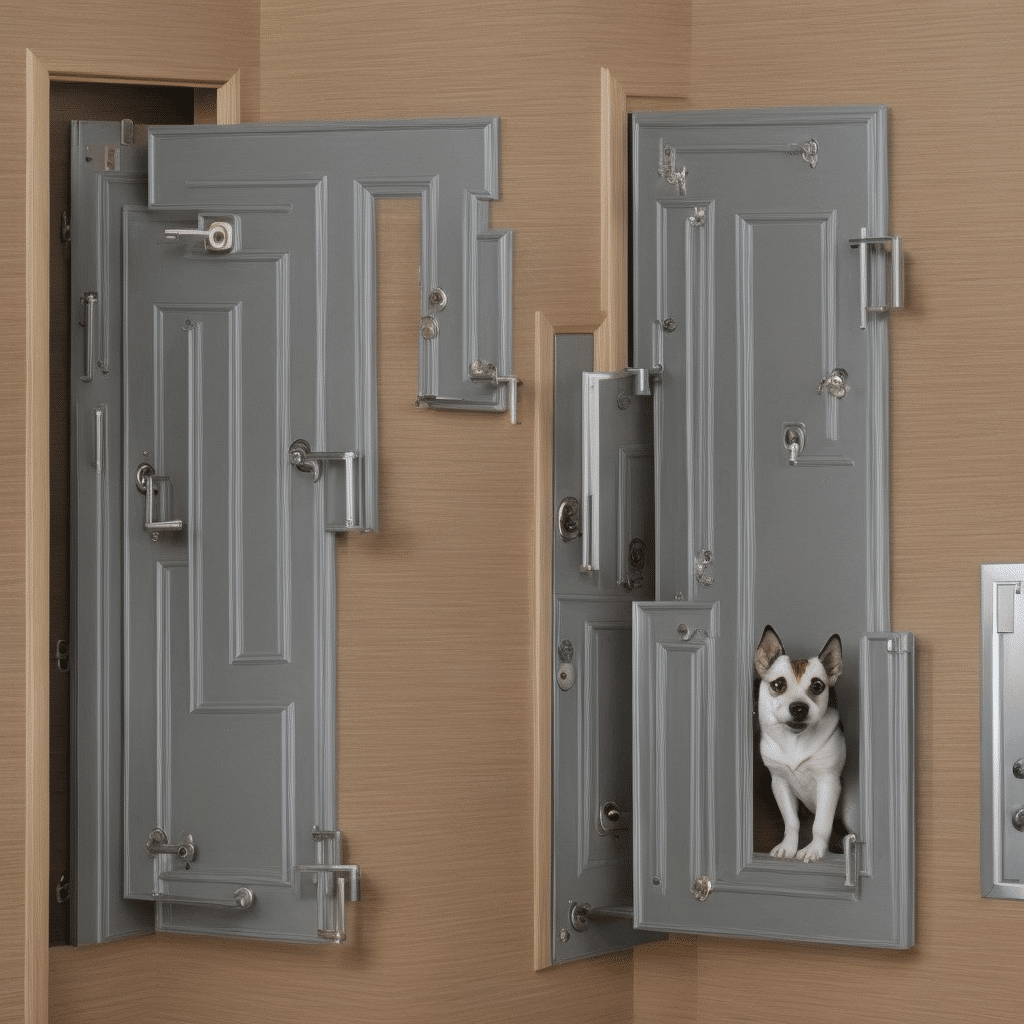Isn’t it great to have a pet that can come and go as they please? A pet door can give your furry friend that freedom. It can also save you from the trouble of waking up in the middle of the night or interrupting your busy schedule to let your pet in or out. However, choosing the right pet door isn’t as straightforward as you might think. There are a number of factors to consider, including the size and breed of your pet, the location and type of the door, and the climate of your region. Let’s take a closer look at these considerations.
Size and Breed of Your Pet
The size and breed of your pet are the first things to consider when choosing a pet door.
Sujet a lire : How to Introduce Your Pet to a New and Larger Living Space?
Different breeds have different sizes and physical characteristics, and you don’t want to end up with a door that your pet can’t use. For instance, a door that is perfect for a small breed like a Chihuahua will not work for a large breed dog like a German Shepherd.
You need to measure your pet’s width and height correctly. Measure the widest part of your pet, which is usually the chest area. For the height, measure from the top of the shoulders (not the head) to the floor. You should add 1-2 inches to these measurements to ensure your pet can pass through the door comfortably.
A lire en complément : How to Choose Pet-Friendly Furniture That Combines Comfort and Durability?
Some pet doors are also designed specifically for certain breeds, taking into account their behavior and physical attributes. For example, there are pet doors that are designed to be extra sturdy and resistant to chewing, which would be a good choice if you have a breed that is known for being a bit destructive.
Location and Type of Door
The location and the type of the door play significant roles in choosing the right pet door.
Pet doors can be installed in various locations including doors, walls, windows, and even sliding glass doors. Each location has its own considerations. For example, a door-mounted pet door is generally the easiest to install, but it might not be the best choice if your door is made of a fragile material or has a design that you don’t want to alter.
The type of door can greatly affect the ease of installation and the functionality of the pet door. There are manual doors, electronic doors, and magnetic doors. Manual doors are the simplest and least expensive. They have a flap that pets can push open. Electronic doors offer more control and security. They can be programmed to open only when they detect a specific microchip or a collar key worn by your pet. Magnetic doors, meanwhile, have magnets that keep the door shut when not in use, which can help keep out drafts and other animals.
Climate Considerations
Climate is another important factor to consider when choosing a pet door.
If you live in a region with harsh winters, you’ll want a pet door that can provide good insulation. Look for a door with energy-efficient features such as double flaps, weather stripping, and high R-value materials.
If you live in a region with a lot of rain or wind, you’ll want a door that can resist these elements. Some doors have wind resistance features, weatherproof materials, and rain-resistant flaps.
Security Features
Security is a concern for many pet owners when installing a pet door.
Some pet doors come with locking mechanisms that allow you to control when your pet can use the door. This can be useful if you want to keep your pet indoors at night or if you’re worried about other animals entering your home.
Electronic pet doors offer the highest level of security. They open only for your pet, preventing unwanted animals from entering your home. Some even have timer controls so you can set specific times when your pet can use the door.
Price and Quality
Price and quality are also important considerations when choosing a pet door.
Cheap pet doors may seem attractive, but they may not be durable or efficient. On the other hand, the most expensive pet doors may have features that you don’t need. Aim for a balance between price and quality. Consider how much you’re willing and able to spend, and choose a door that gives you the best value for your money.
Remember, when it comes to pet doors, you’re not just buying a door. You’re buying freedom and convenience for your pet and peace of mind for yourself. So, take your time and choose wisely.
Durability and Maintenance
Durability is a significant factor when picking the perfect pet door. It’s crucial to select a door that can withstand your pet’s activity level and the wear and tear it will inevitably face.
For example, a dog that likes to chew may require a door made of chew-resistant materials such as heavy-duty plastic or aluminum. Similarly, if you live in a region with harsh weather, you need a door made of a durable material that can withstand those conditions.
Additionally, consider the maintenance required for different types of pet doors. Manual doors with flaps may require more frequent replacement if they become worn or torn. Electronic doors, on the other hand, may need batteries replaced regularly or occasionally need technical troubleshooting.
Choose a pet door that is easy to clean. A dirty pet door can attract pests and become a health risk for your pet. Some pet doors are designed with removable flaps or doors, making them easier to clean regularly.
Aesthetics
While functionality and security should be your top priorities, it’s also worth considering the aesthetic appeal of the pet door.
Pet doors come in various styles, colors, and materials, so you can choose one that best matches your home decor. For example, if you have a wooden door or aesthetic, a wooden pet door might be a suitable choice. If you have a modern and minimalist home, you might opt for a sleek, stainless steel pet door.
Remember, a pet door is a visible addition to your home, and you’ll see it every day. So, while it’s important that it works well for your pet, it’s also nice if it’s pleasing to the eye.
Conclusion
Choosing the right pet door for your home and pet involves several considerations. From the size and breed of your pet, the location and type of the door, to the climate of your region, each factor plays a significant role in the decision-making process.
Moreover, don’t forget to assess the durability, maintenance, security features, aesthetic appeal, and of course, the price and quality of the pet door. Remember, this is an investment for your pet’s freedom and your peace of mind.
Ultimately, the best pet door is one that meets your specific needs and those of your pet. It should provide safe, easy access for your pet, and peace of mind for you. So, take your time to make an informed decision and choose a pet door that offers the best blend of functionality, durability, security, and style.










